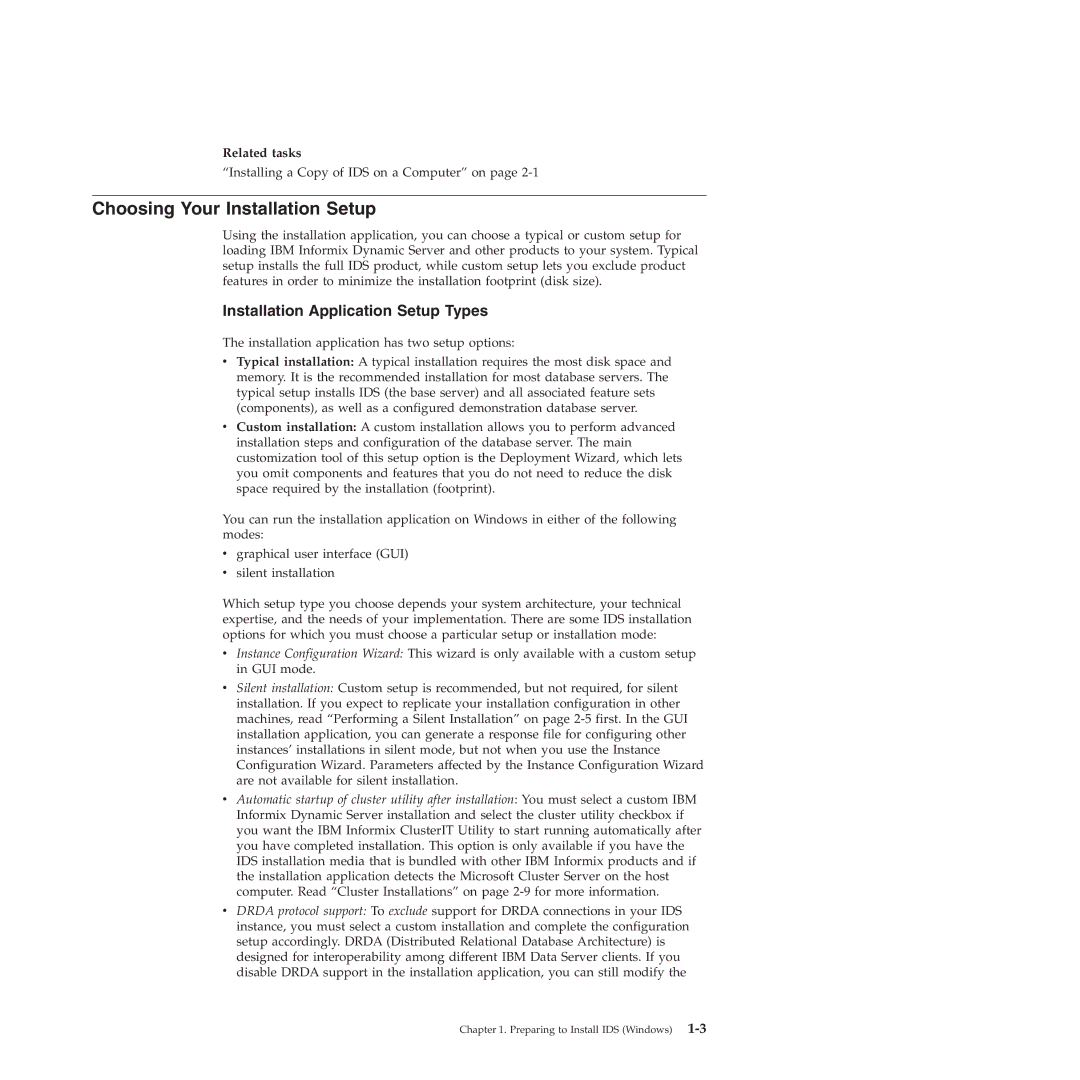Related tasks
“Installing a Copy of IDS on a Computer” on page
Choosing Your Installation Setup
Using the installation application, you can choose a typical or custom setup for loading IBM Informix Dynamic Server and other products to your system. Typical setup installs the full IDS product, while custom setup lets you exclude product features in order to minimize the installation footprint (disk size).
Installation Application Setup Types
The installation application has two setup options:
vTypical installation: A typical installation requires the most disk space and memory. It is the recommended installation for most database servers. The typical setup installs IDS (the base server) and all associated feature sets (components), as well as a configured demonstration database server.
vCustom installation: A custom installation allows you to perform advanced installation steps and configuration of the database server. The main customization tool of this setup option is the Deployment Wizard, which lets you omit components and features that you do not need to reduce the disk space required by the installation (footprint).
You can run the installation application on Windows in either of the following modes:
vgraphical user interface (GUI)
vsilent installation
Which setup type you choose depends your system architecture, your technical expertise, and the needs of your implementation. There are some IDS installation options for which you must choose a particular setup or installation mode:
vInstance Configuration Wizard: This wizard is only available with a custom setup in GUI mode.
vSilent installation: Custom setup is recommended, but not required, for silent installation. If you expect to replicate your installation configuration in other machines, read “Performing a Silent Installation” on page
vAutomatic startup of cluster utility after installation: You must select a custom IBM Informix Dynamic Server installation and select the cluster utility checkbox if you want the IBM Informix ClusterIT Utility to start running automatically after you have completed installation. This option is only available if you have the IDS installation media that is bundled with other IBM Informix products and if the installation application detects the Microsoft Cluster Server on the host computer. Read “Cluster Installations” on page
vDRDA protocol support: To exclude support for DRDA connections in your IDS instance, you must select a custom installation and complete the configuration setup accordingly. DRDA (Distributed Relational Database Architecture) is designed for interoperability among different IBM Data Server clients. If you disable DRDA support in the installation application, you can still modify the
Chapter 1. Preparing to Install IDS (Windows)
